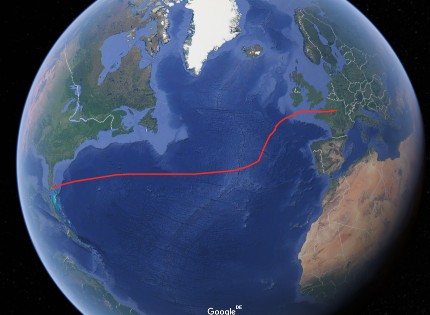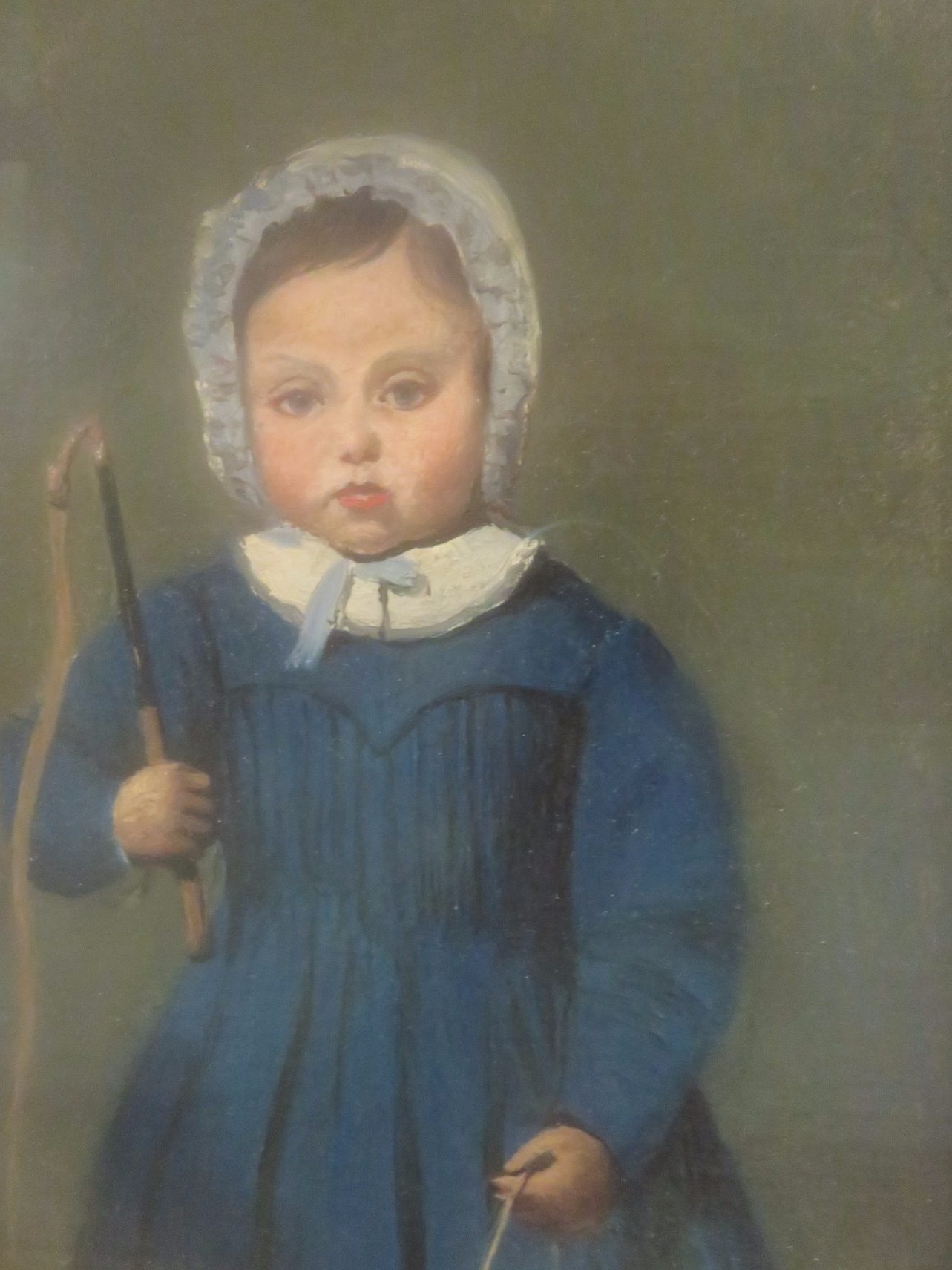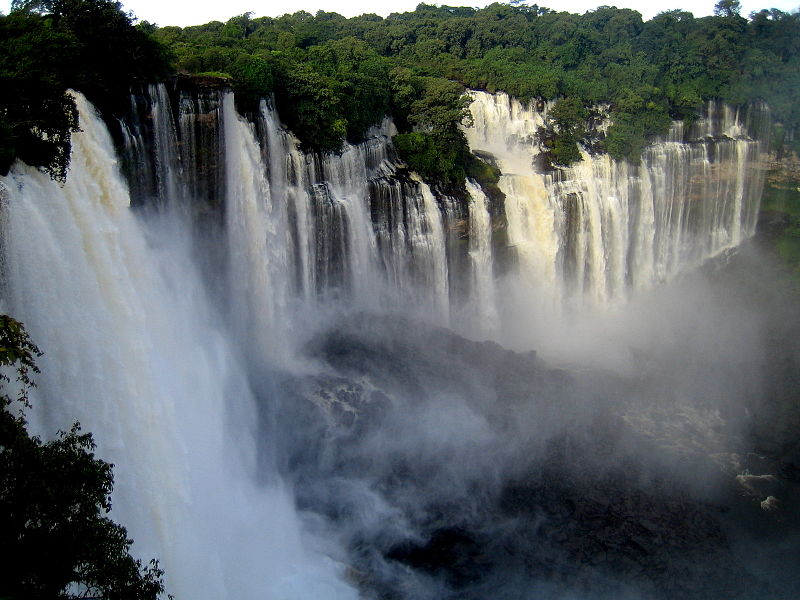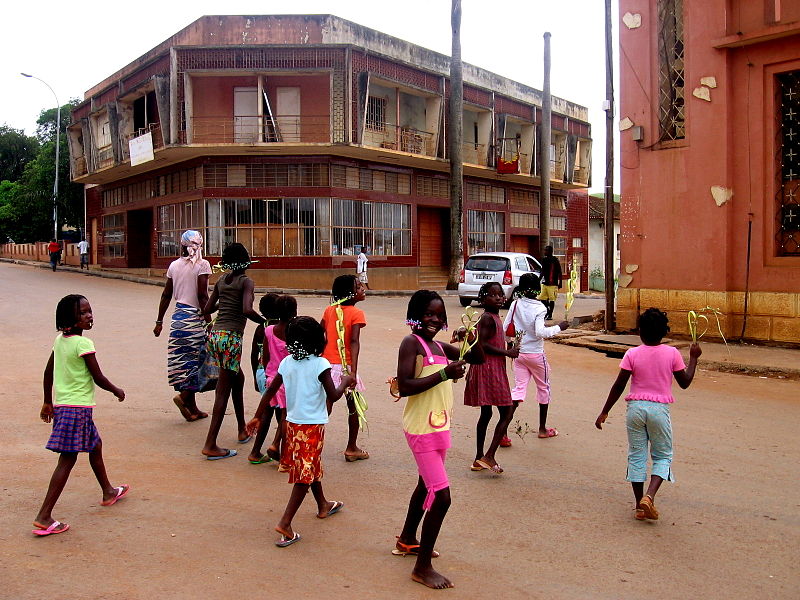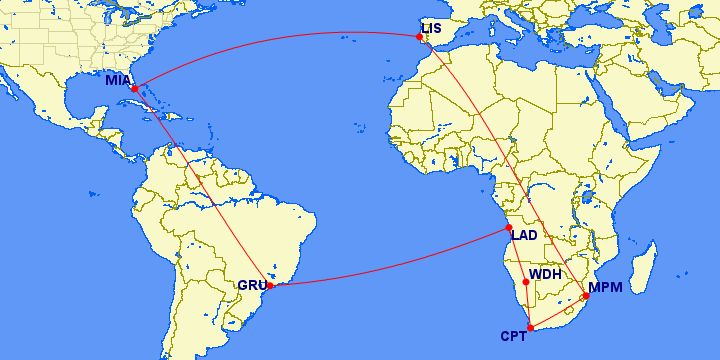Archive for the 'West Africa' Category
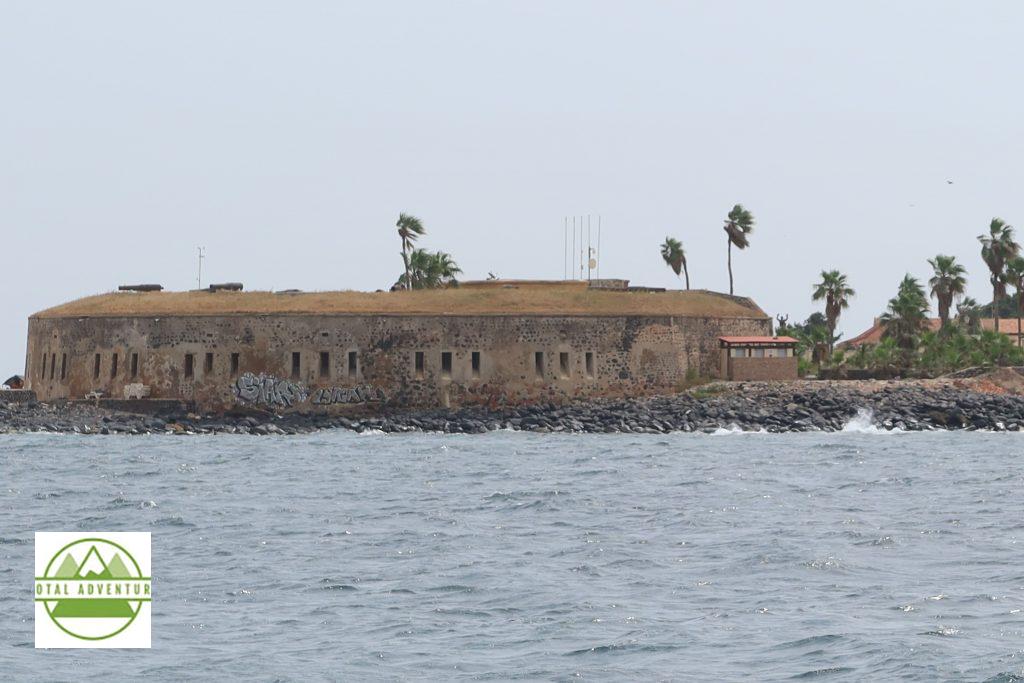
TotalAdventure landed in Dakar Senegal on November 15, after a long flight across the African continent. On Thursday afternoon I flew Skylink from Antananarivo to Johannesburg where there was a 10 hour layover, spent in a lounge ( for pay) before boarding ASKY from Johannesburg to Lomé Togo with a stopover in Kinshasa,Congo. At Lomé I changed planes for the 3 hour flight to Dakar. In the next TotalAdventure Magazine article, I will show the entire air voyage from North America to Asia to Africa and then Europe.

Senegal is an Islamic nation ,with much French influence from colonial times, speaking French and Wolof. While many are pious, the atmosphere is relaxed, with people free to practice their own ways of life. The nation transitions from the edge of the Sahara in the North to humid jungles in the South. Dakar is right in between those zones with a mild oceanside climate. It is the Westernmost point in all of the Eurasian and African landmasses.
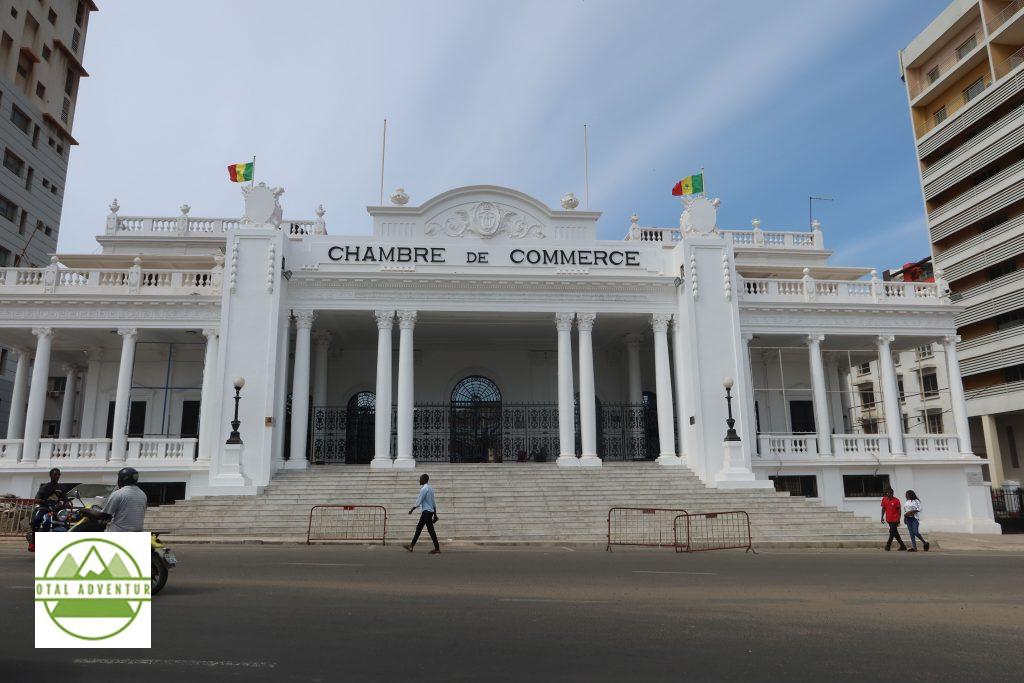
With natural resources ,an educated city population and good air and sea ports, business is connected with the rest of the world – France, the USA and China.
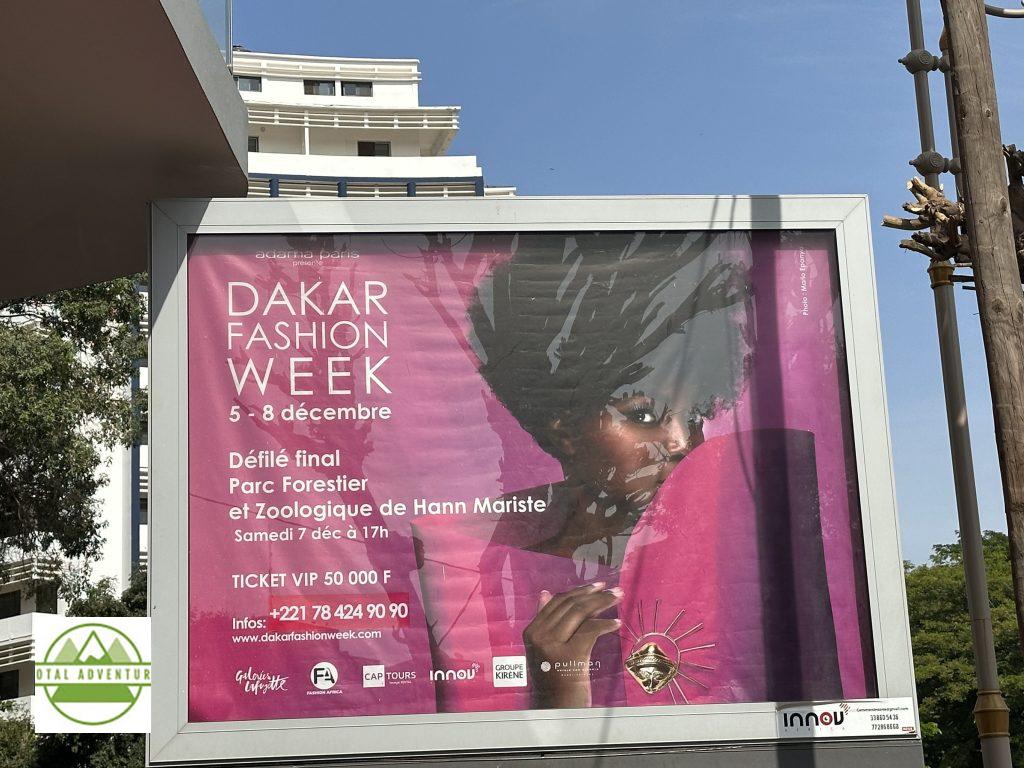
Dakar is a fashion capitol. Getting on the map with New York,Paris and Milan !

West African cuisine is tasty and filling. Chicken,fish ,rice and spices are the main ingredients,
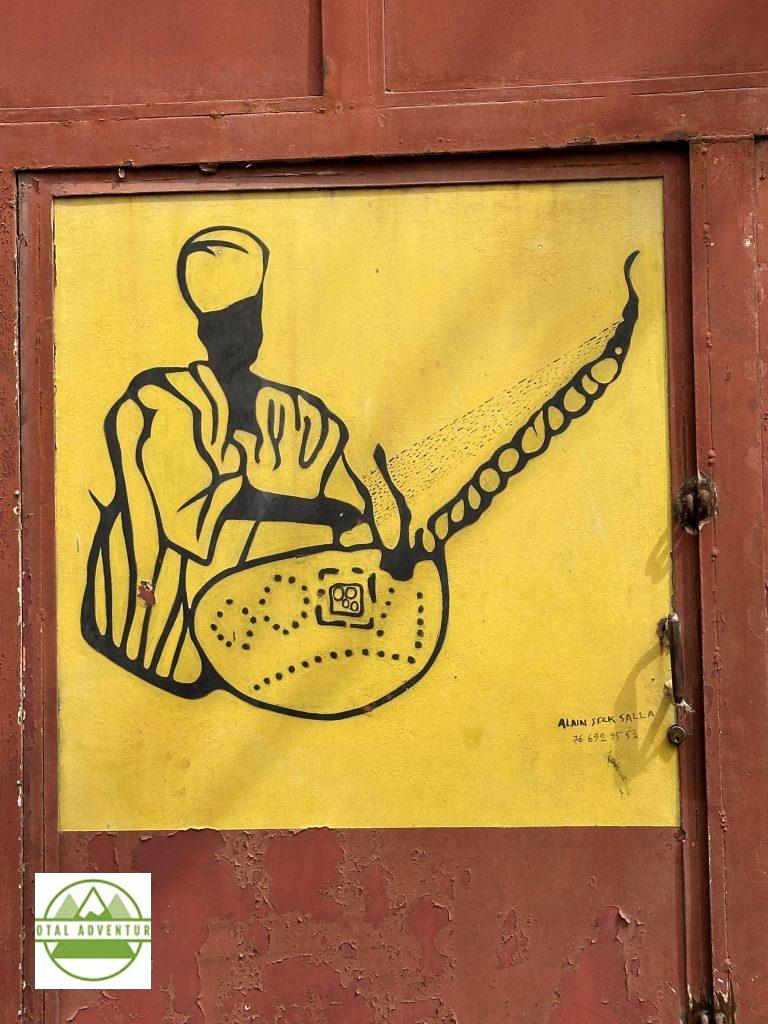
Dakar is also a cultural center for music and art.
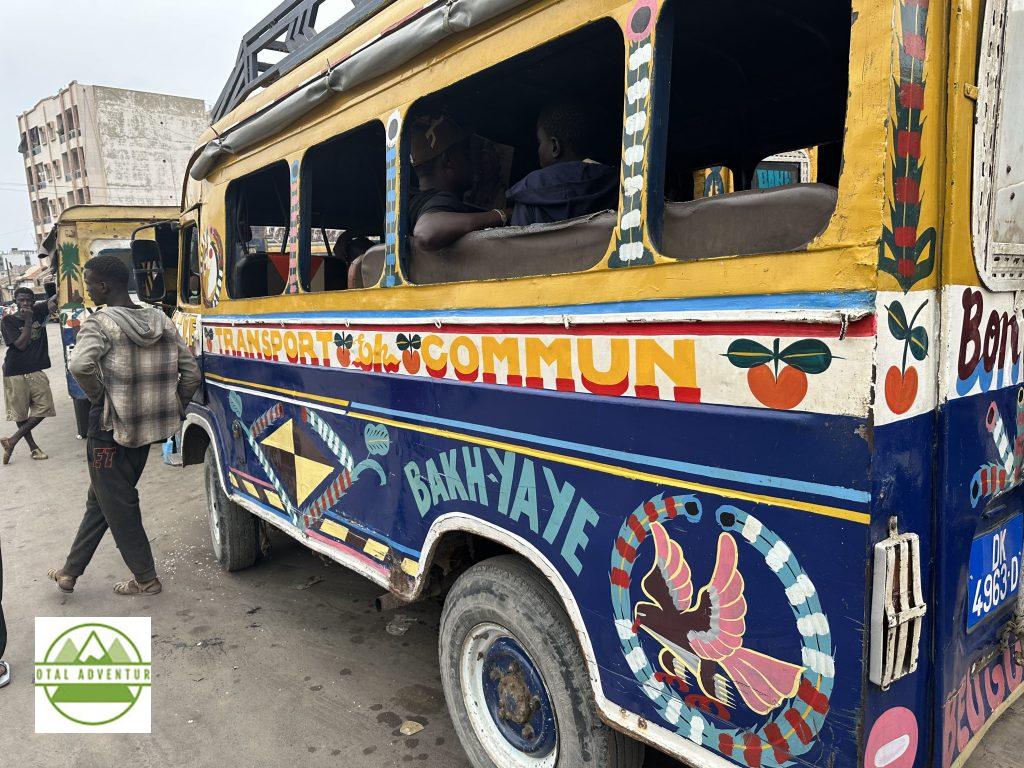
Traffic is not horrendous like most African cities and colorful old French buses ply the streets.
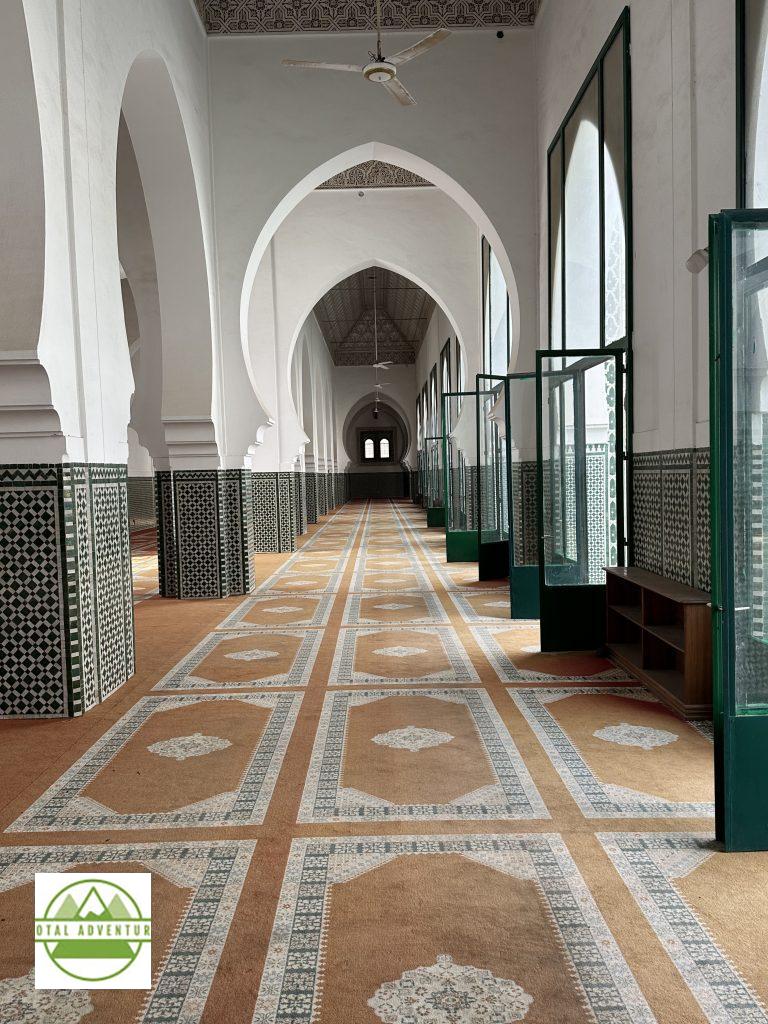
Inside the Grande Mosquée Dakar. It’s one of the largest in the world. TotalAdventure was granted entry and given a tour by the watchman.
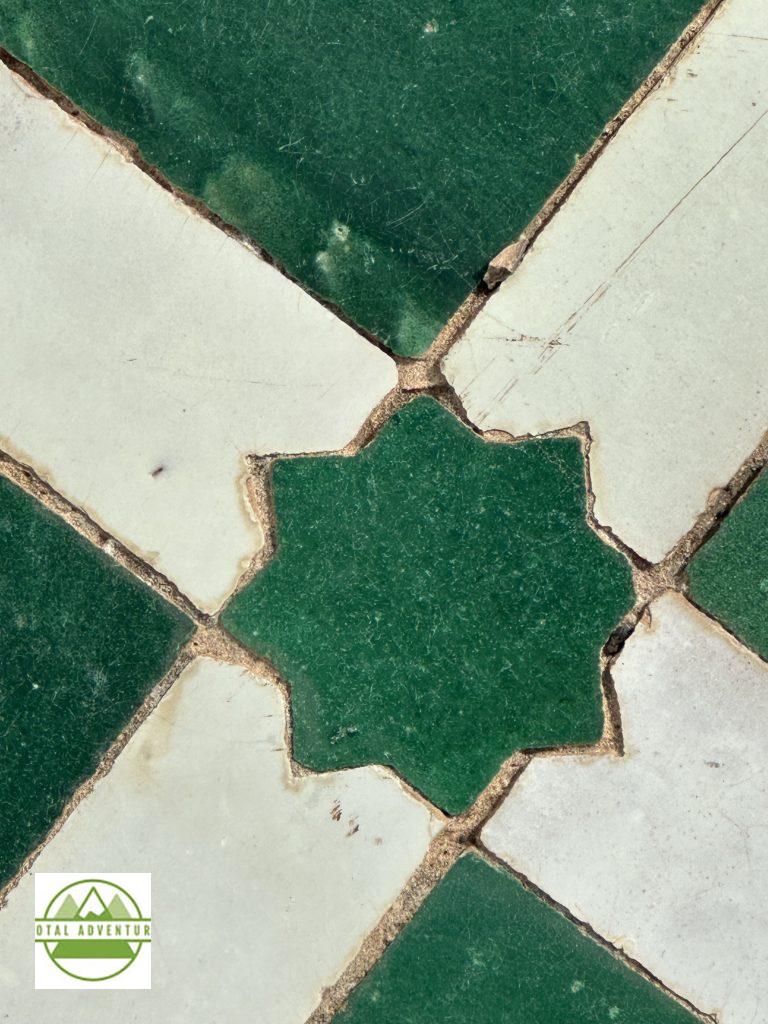
In the Courtyard, by the tens of thousands.
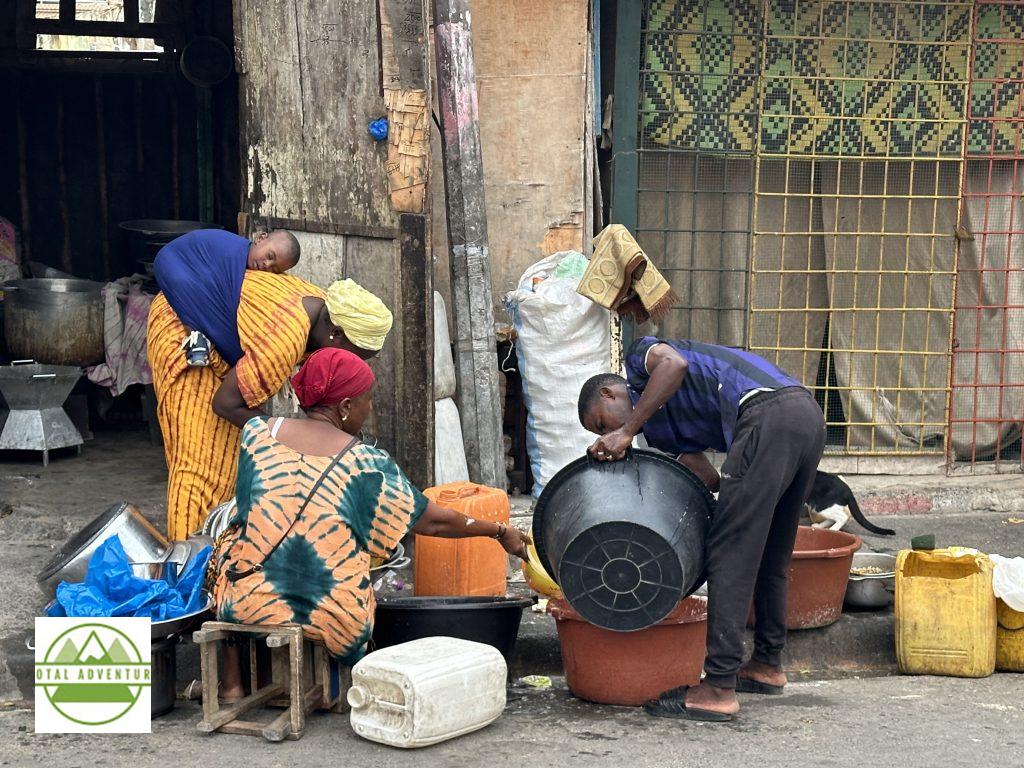
While the standard of living is higher than much of Africa, it is still nowhere near the level of the West.

The CFA Franc is used in the West African nations of Benin, Burkina Faso, Côte d’Ivoire, Guinea-Bissau, Mali, Niger, Senegal and Togo.It is 630 to the US Dollar. Overall prices are much lower than the US and. Western Europe., though some luxury hotels are the same or higher priced than in Europe.
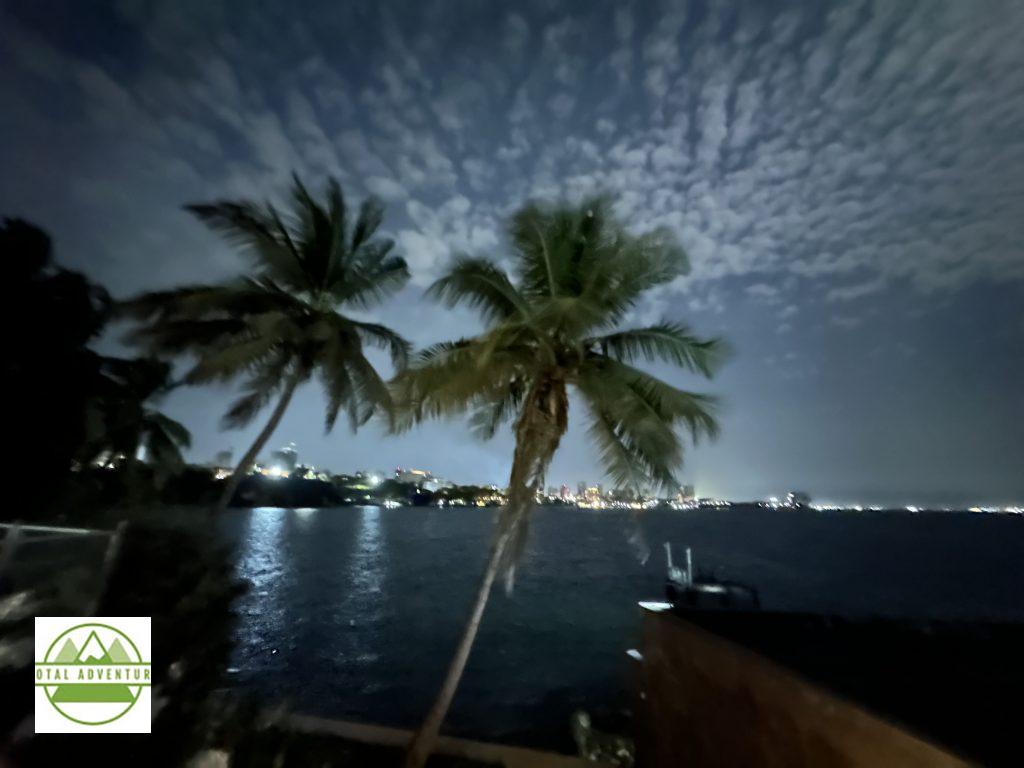
Dakar coastline by night.
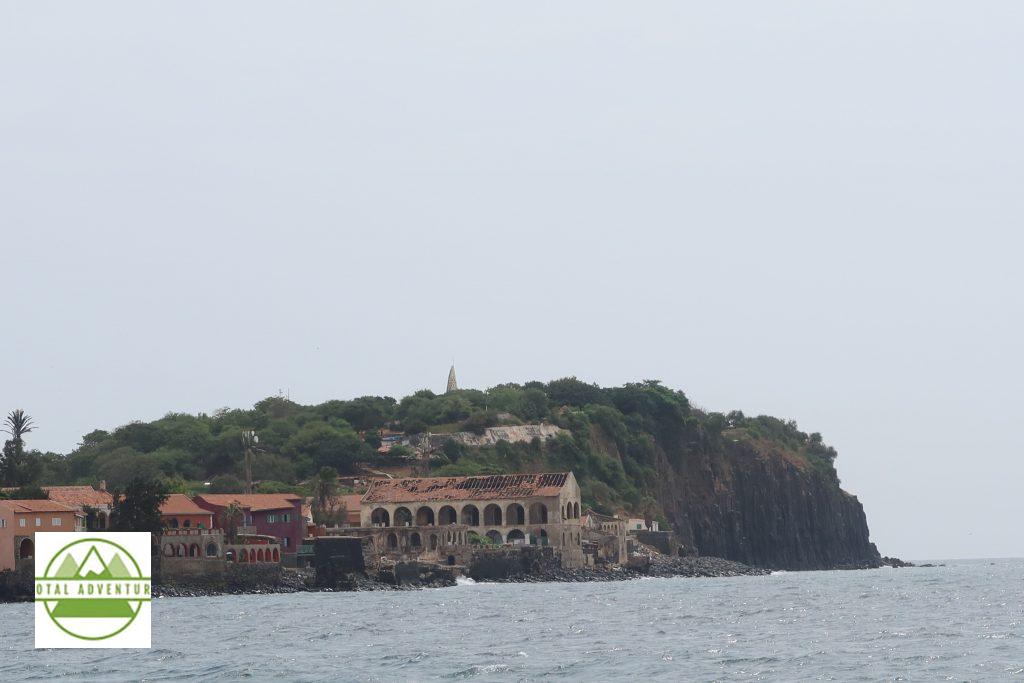
Île Gorée – where millions of slaves were assembled for shipment to America – many of them to Charleston and New Orleans.There was even a house for a US Consulate on the island – probably to process bills of lading. Slaves to Brazil went from Angola. Some buildings remind me of Île Diable in French Guyana – the French excelled at building prisons all over the world.

A ship from nearby Mauritania. TotalAdventure is exploring the possibility of a trip from Morocco to South Africa later this year. Details soon. Contact us directly if interested.
In 1993, the Victoria Zoo became the Limbe Wildlife Centre through the partnership of the Pandrillus Foundation and the Cameroonian Ministry of Forestry and Wildlife. The LWC is a wildlife rehabilitation and conservation education center. The animals there were orphaned as a result of human-wildlife conflicts such as bushmeat hunting or the pet trade. These are major issues in Cameroon and throughout Africa. Animals are often killed both legally and illegally for meat in unsustainable ways, and the infants are kept as pets in unfit living conditions for wild species. When they are rescued by authorities and brought the LWC, the animals are treated by their veterinary team and the rehabilitation process starts as they are integrated into conspecific groups and monitored by their team of specialists. Their mission is based not only on rehabilitation and release, but on educating the population to change views and opinions on wildlife and conservation so that these animals will be safe in the wild for as long as possible.


To
accomplish this mission, the LWC is open to the public for visits. Most of the
visitors to the Centre are locals bringing their families to see the animals,
but occasionally international tourists such as myself pop in, and there is so
much for us to be impressed by.
Upon entering the sanctuary, every person greets you with warm hellos, hugs,
handshakes, and smiles. Once paying at the entrance, viewers can begin walking
the tourist trail and viewing animals. The first visible animals are 3 family
groups of gorillas and their impressively giant silverback males. They were the
show stealer in my ape-loving heart, but there were so many other amazing
animals as well.






Past the gorillas are two huge groups of chimpanzees (totaling 44 individuals). They are the liveliness of the LWC, shrieking, chasing, playing, and grooming. Just sitting in their presence could keep someone engaged for hours. There were many groups of guenons and mangabeys throughout the sanctuary, mostly plotting on how to steal small items such as food or toys from onlookers.



Another
amazing group of animals are the “Papio” group, meaning the baboons, mandrills,
and drills. The members of this section became known to me as the most
underrated primates. All three species are beautiful in coloring and huge in
size (for monkeys). Not to mention they live in large multi-male and
multi-female groups with very interesting social dynamics and rules that
control everything from eating to grooming to space use.
Additionally, at the Centre there are non-primate animals native to Cameroon
such as a Nile crocodile (Crocodylus niloticus), two dwarf crocodiles (Osteolaemus
tetraspis), a python (Python sebae), a bay duiker (Cephalophus
dorsalis), a blue duiker (Philantomba monticola), a bushbuck (Tragelaphus
scriptus) and an African civet (Civettictis civetta). These animals
are often seen as the stars of the show, especially the crocodiles being so
ancient and amazing.


Before leaving, one has the opportunity to check out the educational building to learn about the various species and the Centre’s history. There is also a great little gift shop with plenty of handmade items to help support the Centre. For lunch, there is a delicious restaurant within the Centre called Arne’s cafe. There you can get the most delicious veggie burger on the planet. It is definitely worth having a meal there.

The LWC does a lot more than just house animals, a huge amount of their work is in educating the public through visits, school programs, and community outreach. They are leading the fight in Cameroon for conservation and animal welfare, and are worth the time to visit, volunteer, or spread the message. If you are interested in helping with conservation there, the LWC accepts donations as well as volunteers. Give some resources or time to help these animals that can’t speak for themselves!
TotalAdventure does not currently have adventures in Cameroon, but we invite Cameroon companies to apply. TotalAdventure has some great trips to South Africa https://bit.ly/2WPNkPb
For three weeks during the month of August 2019, I got the incredible opportunity to volunteer at the Limbe Wildlife Centre in Cameroon. The LWC initially was the Victoria Zoo until 1993 when a partnership was born between the Pandrillus Foundation and Cameroon’s Ministry of Forestry and Wildlife in an effort to protect the local biodiversity and raise awareness about conservation. The Victoria Zoo then became a wildlife center focused on wildlife rehabilitation and conservation education. The animals there were orphaned as a result of human-wildlife conflicts such as bushmeat hunting or the pet trade. These are major issues in Cameroon and throughout Africa. Animals are often killed both legally and illegally for meat in unsustainable ways, and the infants are kept as pets in unfit living conditions for wild species. When they are rescued by authorities and brought the LWC, the animals are treated by their veterinary team and the rehabilitation process starts as they are integrated into conspecific groups and monitored by their team of specialists. Their mission is based not only on rehabilitation and release, but on educating the population to change views and opinions on wildlife and conservation so that these animals will be safe in the wild for as long as possible.

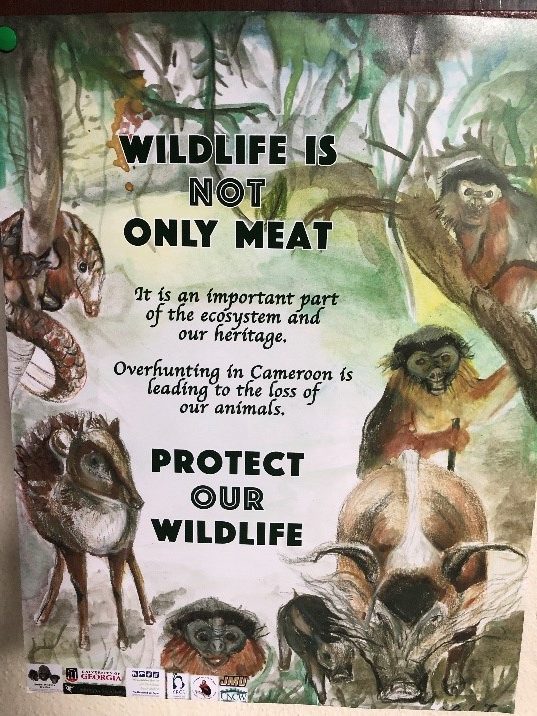
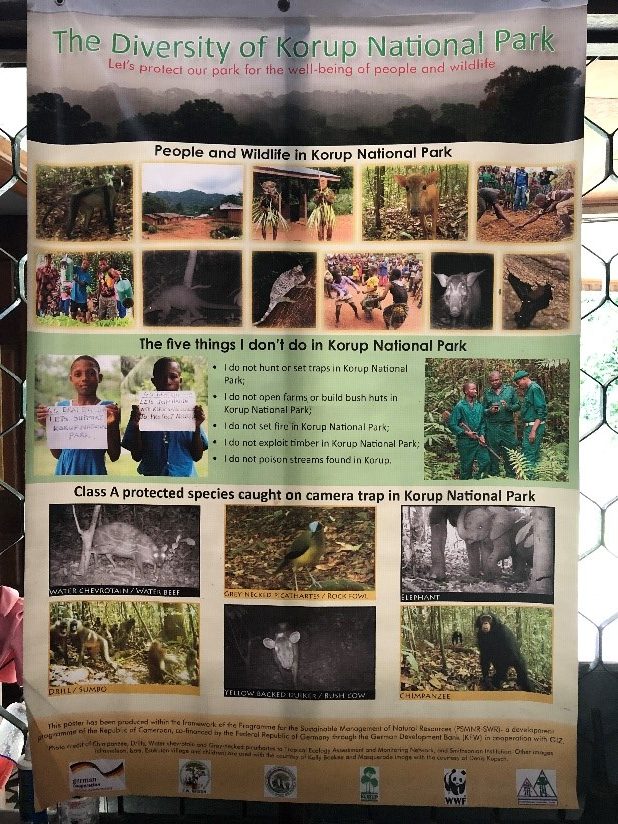
My job as a volunteer at the Centre was that of an assistant animal keeper. During my time there, I would get to assist keepers throughout the five different sections at the sanctuary: gorillas, chimpanzees, guenons and mangabeys, Papios (drills, mandrills, baboons), and quarantine. Mornings at the Centre would begin with friendly greetings, handshakes, and hugs shared with everyone nearby. Limbe is indeed the friendliest town I have ever visited.

Working giving enrichment as a volunteer; masks and gloves are very important to prevent the spreading of zoonotic diseases!
One of the Head Keepers, Jonathan or Victor would then begin the morning with a general team meeting to discuss important news, tasks for the day, and to assign sections to all keepers. Once assigned to a section, the morning consisted of feeding, providing browse, and cleaning the enclosures of all animals. This experience surely shows how each species has their own little quirks. Chimps are definitely the loudest (and debatably the messiest to clean after), the gorillas hate being stared at, and monkeys oftentimes just want to cause mischief by taking your supplies! This experience gave me an appreciation for the quirks among individuals in a species, but even more so for the distinct personality traits between individuals. We all eventually formed our opinions on favorites and developed closer bonds more with some animals than with others.




Once all of that was finished, volunteers were usually asked to help create enrichment for the day.
Enrichment is environmental stimuli (often nutritional and structural) designed to improve the wellbeing of sanctuary animals by keeping them mentally and physically engaged and stimulating natural behavior they would be doing in the wild. For enrichment, we often made “leaf packs” (snacks wrapped in leaves and twine that primates must unpack to eat), as well as re-used and washed plastic bottles filled with browse and other nutritional supplements, boxes, and other variations. Some days the chimpanzees (Pan troglodytes) are given sticks to remove honey from crevices on a termite mount, to practice their tool use, or are given ice blocks with treats to try to break and melt. The idea is to induce critical thinking and problem-solving. At noon, everyone at the Centre breaks for lunch. A local Cameroonian dish is served in the meeting hall every day for volunteers and staff. This varies daily but sticks to a few main ingredients: rice and beans are popular, fish (as Limbe is a fishing town), oils, spices, and a traditional African meal fufu was very common. Fufu has multiple variations depending on what it is made with, but it is basically a dough-like food used to fill stomachs when food is scarce. The Cameroonian lunches were not my favorite part of the experience, but I was so grateful for people to share with me their food and culture.


In the afternoons, keepers were tasked with observing their animals for monitoring, which freed up time for volunteers to work on maintenance projects around the Centre with the construction team. During the time I was there, the LWC was working on building a new rehabilitation aviary for the rescued African grey parrots (Psittacus erithacus) in their care. So, my afternoons mostly consisted of helping in construction and painting. Other options included harvesting browse for animals, preparing food, etc. At one point, I was even offered the opportunity to help with observations. The LWC is dedicated to being knowledgeable about the specific animals in their care and providing the best possible care, so I was able to watch a group of guenons consisting of two species, mona monkeys (Cercopithecus mona) and putty-nosed guenons (Cercopithecus nictitans), to try to problem-solve some social issues they were having. Close observation and research are the best ways to learn about animals to make adaptations to their environments or social groups for their benefit. This gave me practice for my future career in primate research and helped them prevent monkey injuries due to conflict. If you are a long-term volunteer with the LWC, you have the option to start your own research project based on the observation of animals in their care.



After work was always pleasant, returning to the volunteer house to shower, eat, and rest. Of course, it was different from my luxurious life in the US in almost every way. Shower water had to be warmed on the stove, and mosquito nets hung over the bed, but it truly brought one back to a simpler place in time.



Overall the work was hard and the days long but working at the sanctuary gave one a sense of pride in their work and a sense of meaning. Coming back to the house at the end of the night has a sense of camaraderie and belonging. All the little outside worries that exist in western society seemed to fade and no longer matter. With upbeat Cameroon music and delicious grilled chicken smell, and the extreme friendliness of locals in the air, it could truly make one rethink the meaning of home.
TotalAdventure does not currently have adventures in Cameroon, but we invite Cameroon companies to apply. TotalAdventure has some great trips to South Africa https://bit.ly/2WPNkPb
Lucky for me, my birthday fell within this trip to Cameroon. To celebrate, some of the sanctuary staff took me to Tsaben Beach. About a half hour from the town of Limbe, Tsaben Beach was the antithesis of polluted Down Beach. In fact, it is among the most beautiful beaches I have ever seen in my life. Black volcanic sand and rocks line the crystal blue water, and lush greenery is ever present. A row of pavilions provides a shady spot to down some beers and play cards.
Our visit took place during the rainy season in Cameroon, so tide was too high and rough to swim, and the sky was too cloudy to see the rumored breath-taking sunset. According to the locals, it was a flop of a beach day, but I think it was the most beautiful beach and best birthday I’ve ever experienced.










TotalAdventure does not currently have adventures in Cameroon, but we invite Cameroon companies to apply. TotalAdventure has some great trips to South Africa https://bit.ly/2WPNkPb
During our stay in Cameroon, we visited Bimbia, was the largest slave trade site in all central Africa. It was quite harrowing and eerie to be there. It felt as if the site was alive with the spirits of the hundreds tortured and murdered there. Among the atrocities we witnessed was a feeding trough where people’s hands and feet were chained together, and they were made to eat with their mouths, hunched over. We saw large pillars where people were chained on top of each other and left to struggle until one remained. The survivor was then sent through the “door of no return” onto a boat to a small island. The island had no food or water and was a holding site for slaves waiting to be taken to the Americas or Europe, sometimes in abundance of two weeks.
We also learned that many tribes people came to Bimbia thinking there was a prosperous life with jobs there because many of their friends and family were taken there and never returned. Once they crossed the bridge into Bimbia, they were kidnapped, chained, and enslaved. It was a very painful place to witness firsthand, but certainly a worthwhile experience for anyone visiting central Africa.










The site holds reenactments annually that involve rebuilding some areas of the site.





TotalAdventure does not currently . have adventures in Cameroon, but we invite Cameroon companies to apply. For another exotic area in Africa, check out our trip to Ethiopia. https://totaladventure.travel/trips/203383
A glimpse of Douala
I arrived at Douala airport (one of the two biggest cities in Cameroon) late in the evening August 10th, 2019. I was warned before arriving that I would very quickly and easily make friends. This was lucky for me because the very first person I met on the airplane was crucial to my making it safely to my destination. In Cameroon, people tend to be very kind and inviting. Perfect strangers helped me fill out paperwork, navigate the airport and safely find my driver.
Once I was in the car, the ride to the volunteer house was about an hour and a half. The city of Douala was such a culture shock- it was almost indescribable. Unfortunately, it was after midnight, so I could not see much, but what I did see was SO different. The city was nothing like my experience of a US city. The infrastructure from roads to buildings were seemingly dilapidated and old. Many markets and shops were simple tents or just products (like bed frames) laying on the side of the street.
Yet, much of the city was still very much awake at 1AM. There were clubs and bars full of people and loud music. The most mouthwatering smell of grilling chicken permeated the air everywhere we went.
Older cars and bikes were driving all over the road in a strictly Cameroonian way of driving. The traffic was another major culture shock. Laws that would be enforced in the US seemed more like suggestions here. Red lights don’t necessarily mean stop- they mean look before you go. Many roads were not divided into lanes, and the ones that were were completely ignored. Cars weaves around each other sometimes squeezing four side by side. Bikes, pedestrians, and cars shared the road equally.
Perhaps the scariest part is when we were stopped at two roadblocks- one leaving Douala and one entering Limbe- by police. They just wanted to check our identification, but they were holding very threatening machine guns and were not very friendly. The stretch between the cities was very natural and forested, but too dark to see anything.
Limbe
I woke up to the sounds of an animal orchestra outside of the research house. Combined with the sounds of all the primate species at Limbe wildlife center were the screeches of all the neighborhood chickens, cats, dogs, pigs, horses, and other unidentified animals.

Limbe wildlife center is a major attraction of Limbe and the reason why I am here. The LWC is a wildlife education and conservation center. The animals kept here were orphaned as a result of bushmeat hunting or the pet trade. This is a huge issue in Cameroon and throughout Africa. Animals are often killed for meat, and the infants are kept as pets or trophies in horrible living conditions. They are rescued and brought the LWC for rehabilitation and to live with members of their own species. I am lucky enough to be spending 3 weeks volunteering at this sanctuary.

One of my first stops in Limbe was the local market “old market”. The most efficient way to get there is by motorbike. This was a totally new experience to me- clinging to the back of a bike in weaving traffic. The market was much like stores in Douala where tents or small wooden shelters cover the fruits and vegetables spread on burlap sacks on the ground. There were probably 20 or so shops at the market with a wide variety of African produce. Many merchants will help you find what you’re looking for, and you’re almost guaranteed to go home with a free sample of some new or unique produce.

Just a few blocks from the market is mars bar- a European themed restaurant and bar on Down Beach. Down beach is a black sand beach that stretches along the coast of Limbe. It is not very good for swimming because of the amount of litter, but it is popular for the fishing culture and economy of Limbe. The beautiful Mountain View and the sunset over the ocean also make it well worth the visit.



Finally, another worthwhile attraction is the Limbe botanical garden. The garden is home to many beautiful (and some edible) plants. There is also a “naturalistic” amphitheater, a nearly 200-year-old cemetery, and plenty of beautiful views. While you are there, be sure to check out Hot Spot, a restaurant within the garden that has delicious burgers, and sometimes even cheeseburgers- which are extremely rare in Limbe.





Overall, the breathtaking nature, incredibly sweet and welcoming people, and the laid-back lifestyle of Limbe made it one of my all-time favorite destinations.
TotalAdventure does not currently . have adventures in Cameroon, but we invite Cameroon companies to apply. For another exotic area in Africa, check out our trip to Ethiopia. https://totaladventure.travel/trips/203383
On the morning of July 3rd TotalAdventure arrived in Paris. While Paris does not conjure adventures other than those of gastronomy ,art and retail , it is home to adventure companies that lead trips into former French West African colonies – the safer ones being Cameroon,Gabon,Mauritania and Burkina Faso. Niger,Chad and parts od Algeria are inadvisable at this time due to murderous incursions by Boko Harem.
It’s about 10 hours from Miami to Paris. It would be great if Air France would have WiFi on their flight. They don’t.
The Tour de Eiffel on a Glorious Summer Evening. In Early July It Stays Light Past Ten.
The Tower From Underneath.
The Louvre.
In 4 Hours It Is Possible To See About Ten Percent Of The Louvre.
Always Real Escargot, Not Canned Like In The States.
ArcticTropic may venture to Angola this coming October, on the way to the ATTA Conference in Windhoek,Namibia. Though the 30 year war ended several years ago, toursim in any form is almost non-existent. These photos are courtesy of Wikipedia Commons.
Luanda, the capital, is about 7 hours across the South Atlantic from São Paulo via TAAG Airlines. There are also direct flights from Lisbon,Johannesburg and Windhoek – by air Angola is not difficult to get to. Visas, however,must be applied for several weeks in advance.
The difficult part begins once you are on the ground. Transportation is very difficult with few paved roads. Hotels in Luanda are amongst the most expensive in the world – yet of very poor quality.
ArcticTropic is open to having fellow ATTA delegates join us for this exploratory visit. Please
Contact us if interested.
Expeditions for the rest of the year are in the advance planning stages. Above is the flight pattern for June-July.
The flight pattern for October -November, above.
Mali is the true West African Adventure. The ancient cities of Timbuktu and Mopti are early African civilization centers. The Dogon and Tuareg tribes are fascinating to travel with.


